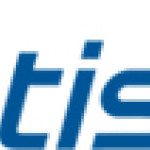- 産業: Telecommunications
- Number of terms: 29235
- Number of blossaries: 0
- Company Profile:
ATIS is the leading technical planning and standards development organization committed to the rapid development of global, market-driven standards for the information, entertainment and communications industry.
A reference signal, often repeated periodically, enabling the correlation of specific events with a time scale, such as for establishing synchronization.
Industry:Telecommunications
A reference source of timing information. 2. A device providing signals used in a transmission system to control the timing of certain functions such as the duration of signal elements or the sampling rate. 3. A device that generates periodic, accurately spaced signals used for such purposes as timing, regulation of the operations of a processor, or generation of interrupts.
Industry:Telecommunications
A reflector consisting of three mutually perpendicular intersecting conducting flat surfaces, which returns a reflected electromagnetic wave to its point of origin. Note: Such reflectors are often used as radar targets. 2. A directional antenna using two mutually intersecting conducting flat surfaces. 3. A device, normally consisting of three metallic surfaces or screens perpendicular to one another, designed to act as a radar target or marker. 4. In radar interpretation, an object that, by means of multiple reflections from smooth surfaces, produces a radar return of greater magnitude than might be expected from the physical size of the object. 5. A passive optical mirror, that consists of three mutually perpendicular flat, intersecting reflecting surfaces, which returns an incident light beam in the opposite direction.
Industry:Telecommunications
A region bounded by two or more mirrors that are aligned to provide multiple reflections of lightwaves. Note: The resonator in a laser is an optical cavity. In this sense, synonym resonant cavity.
Industry:Telecommunications
A region bounded by two or more mirrors that are aligned to provide multiple reflections of lightwaves. Note: The resonator in a laser is an optical cavity. In this sense, synonym resonant cavity.
Industry:Telecommunications
A register in which one operand can be stored and subsequently replaced by the result of an arithmetic or logic operation. 2. A storage register. 3. A storage battery.
Industry:Telecommunications
A register that holds the operands or the results of operations such as arithmetic operations, logic operations, and shifts.
Industry:Telecommunications
A regulated service provided by a telecommunications provider, such as an operating telephone company or a carrier, for NS/EP telecommunications. Note: The TSP service replaced Restoration Priority (RP) service effective September 1990.
Industry:Telecommunications
A relationship between two signals such that their corresponding significant instants do not necessarily occur at the same time. Note: Two signals having different nominal signaling rates and not stemming from the same clock or from homochronous clocks are usually heterochronous.
Industry:Telecommunications
A relatively large-radius bend in an optical fiber, such as might be found in a splice organizer tray or a fiber-optic cable that has been bent. Note: A macrobend will result in no significant radiation loss if it is of sufficiently large radius. The definition of "sufficiently large" depends on the type of fiber. Single-mode fibers have a low numerical aperture, typically less than 0. 15, and are therefore are more susceptible to bend losses than other types. Normally, they will not tolerate a minimum bend radius of less than 6. 5 to 7. 5 cm (2. 5 to 3 inches. ) Certain specialized types of single-mode fibers, however, can tolerate a far shorter minimum bend radius without appreciable loss. A graded-index multimode fiber having a core diameter of 50 m and a numerical aperture of 0. 20 will typically tolerate a minimum bend radius of not less than 3. 8 cm (1. 5 inches. ) The fibers commonly used in customer-premises applications (62. 5-m core) typically have a relatively high numerical aperture, (approximately 0. 27,) and can tolerate a bend radius of less than an inch (2. 5 cm. )
Industry:Telecommunications
